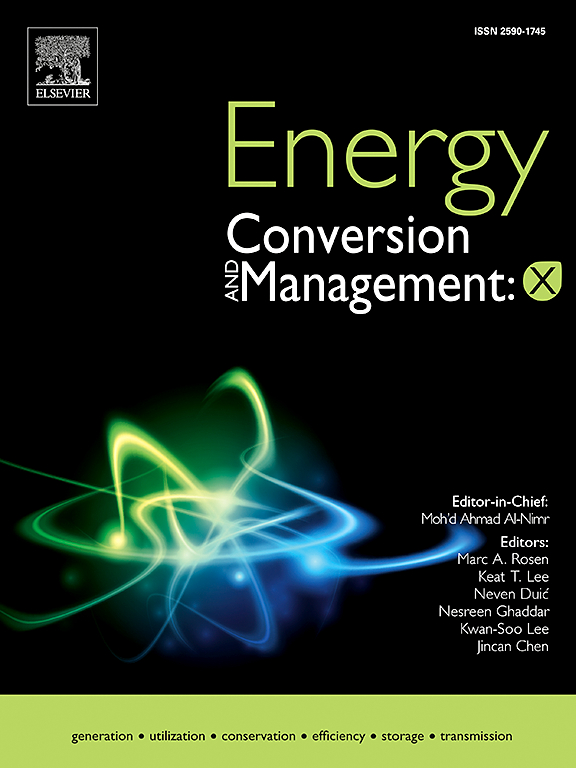工业场地脱碳的优化与评价方法——以某轻工业为例
IF 9.9
1区 工程技术
Q1 ENERGY & FUELS
引用次数: 0
摘要
工业部门包括范围广泛的工业和工序,很难确定脱碳的单一方法或普遍战略。一般而言,最有效的楼宇脱碳方法包括两个阶段:(i)减少能源需求;(ii)以可再生能源取代以化石燃料为基础的发电装置,并可能加强对暖通空调系统的管理,以减少所需的峰值功率。文献提供了一般的规则和方案,但目前还没有找到关于工业建筑节能改造的具体作品。本研究调查了一个现有的工业区,使用动态能源模型的建筑物调整了当前条件,并比较了七个脱碳方案。研究了一个与地面交换热量的中性水循环,由于更高的热交换效率和模块化安装,代表了一个广泛可复制的解决方案,可以在场地内扩展。所获得的显著节能(28%)和二氧化碳减排(高达70%)代表了欧洲温和气候下许多工业基地可能实现的目标,其中脱碳应实现最佳成本效益结果,同时通过模块化方法将对生产的影响降至最低。本文章由计算机程序翻译,如有差异,请以英文原文为准。
Optimization and assessment method to approach industrial site decarbonization: A case study of a light industry
The industrial sector includes a wide range of industries and processes for which a single approach or universal strategies for decarbonization can hardly be identified. In general, the most efficient way to decarbonize building sites consists of two phases: (i) reduce the energy demand and (ii) replace the fossil-based power generation units with renewable energy sources, possibly working on the management of HVAC systems to reduce the required peak power. Literature provides general rules and schemes, but no specific works on the energy retrofit of industrial buildings have been found in literature so far. The present study investigates an existing industrial district, using dynamic energy models of buildings tuned with the current conditions and compared with seven decarbonization scenarios. A neutral water loop exchanging heat with the ground has been studied, representing a widely replicable solution due to the higher heat exchange efficiency and the modular installation, which can be expanded within the site. The significant energy savings (28%) and CO2 emission reduction (up to 70%) obtained are representative of the potential achievable for many industrial sites in mild European climates, where decarbonization should achieve optimal cost-benefit results while minimizing the impact on the production through modular approaches.
求助全文
通过发布文献求助,成功后即可免费获取论文全文。
去求助
来源期刊

Energy Conversion and Management
工程技术-力学
CiteScore
19.00
自引率
11.50%
发文量
1304
审稿时长
17 days
期刊介绍:
The journal Energy Conversion and Management provides a forum for publishing original contributions and comprehensive technical review articles of interdisciplinary and original research on all important energy topics.
The topics considered include energy generation, utilization, conversion, storage, transmission, conservation, management and sustainability. These topics typically involve various types of energy such as mechanical, thermal, nuclear, chemical, electromagnetic, magnetic and electric. These energy types cover all known energy resources, including renewable resources (e.g., solar, bio, hydro, wind, geothermal and ocean energy), fossil fuels and nuclear resources.
 求助内容:
求助内容: 应助结果提醒方式:
应助结果提醒方式:


